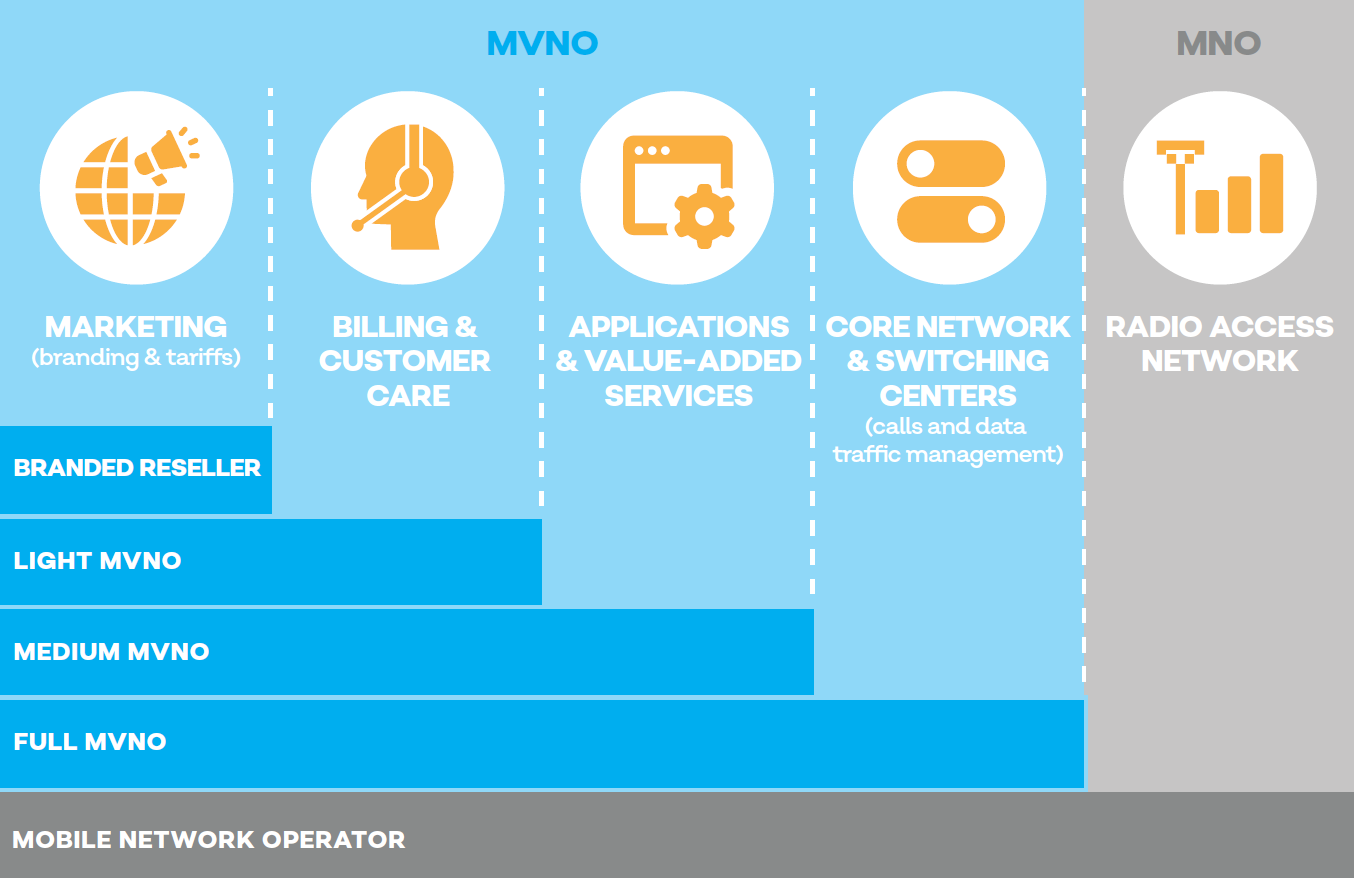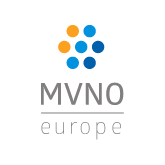Supporting Mobile Virtual Network Operators who are active in European mobile markets
Our goals:
- Create a more openly accessible market for all MVNOs, so they can better contribute to the growth of the fast-moving mobile communications sector.
- Ensure consumers as well as business users have a wider range of diversified services to choose from.
- To boost competition on the retail mobile market to stimulate innovation in the telecom sector.

Who are we?
What is an MVNO?
The acronym MVNO stands for Mobile Virtual Network Operator. These telecommunications service providers are called “virtual” as they do not own radio spectrum which, being a scarce resource, can be granted only to a limited number of operators, the Mobile Network Operators (MNOs in professional jargon). MVNOs therefore use MNOs’ radio spectrum-based transmission services together with related wireless network infrastructure (e.g. masts and antennas) to provide services to their customers.

MVNOs operate around 10% of all EU SIM cards
Our members serve around 20 million subscribers
MVNOs operate around 10% of all EU SIM cards
What we stand for?
-
- Successful in differentiating themselves from bigger players that possess mobile networks
-
- Leaders in Internet of Things (IoT) markets including automotive, end-user devices and industrial IoT
-
- First-mover in unlimited 4G data offers (both mobile and fixed wireless)
-
- Precursors of e-payment & telecommunications integration
-
- Challenging the status quo on markets that have historically been oligopolistic
-
- Effective remedy to market concentration (i.e. mergers) which can negatively affect telecom end-users
-
- Offer best value deals with tangible benefits for consumers in terms of lower prices
-
- Excel in customer satisfaction surveys
-
- Smoothly adapt to clients’ ever-changing needs thanks to their flexible structure
-
- Design tailored solutions for consumers and businesses that are not well-served by traditional operators (e.g. young and elderly people or SMEs)
-
- 5G will in turn enable MVNOs to develop high-quality connectivity platforms (e.g. for connected cars)
-
- The money paid by MVNOs to gain access to the network can be re-invested by MNOs in state-of-the-art broadband infrastructure and in the digital development of challenge areas, where mobile connectivity is limited or non-existent
-
- Selling wholesale access to MVNOs is a way for MNOs to offset costs and bring about economies of scale for better network utilisation
-
- Enabling and promoting virtual operators is by far more environmentally responsible than promoting the build-out and operation of additional parallel physical mobile infrastructures, while also improving choice for end-users
